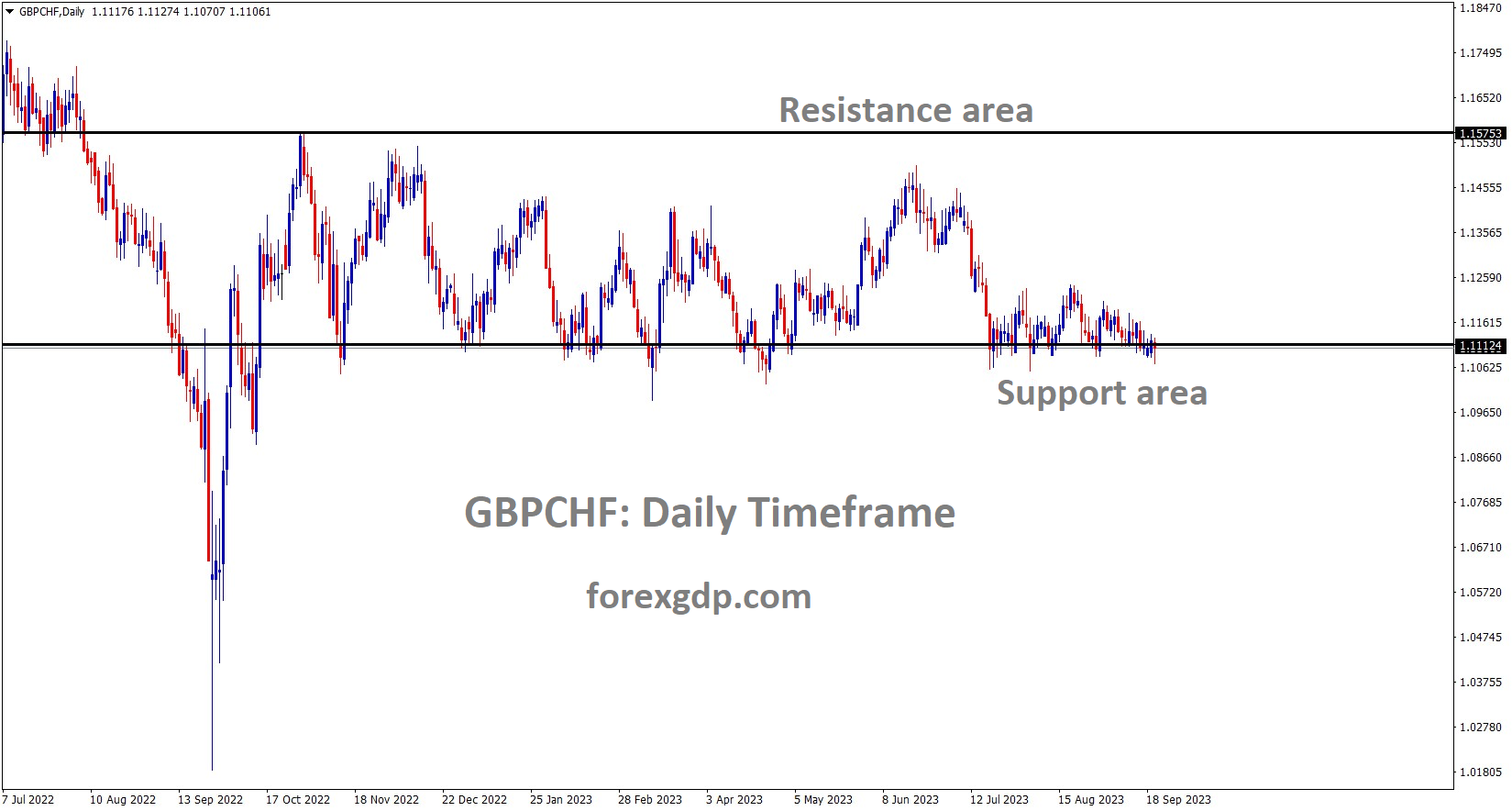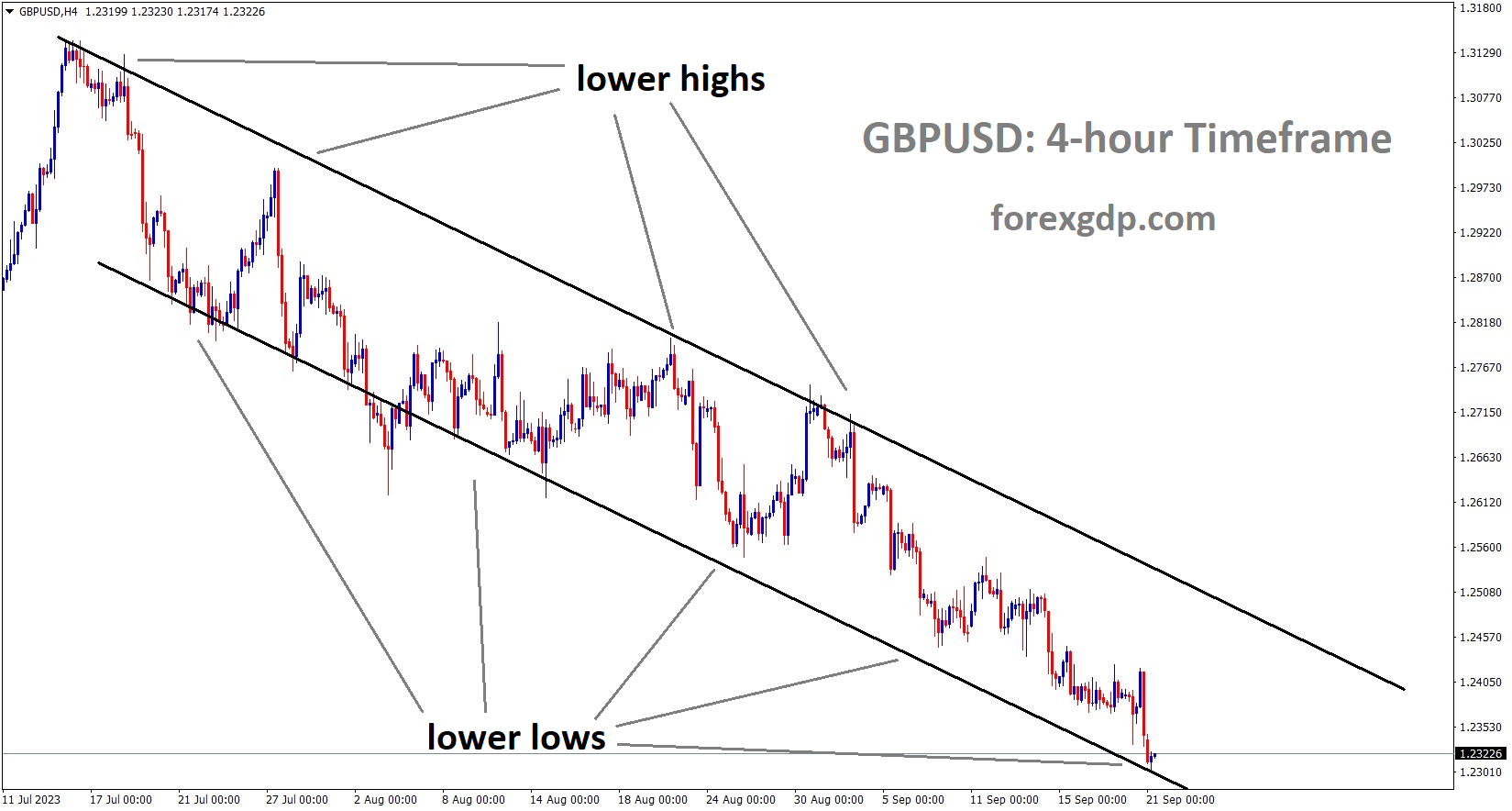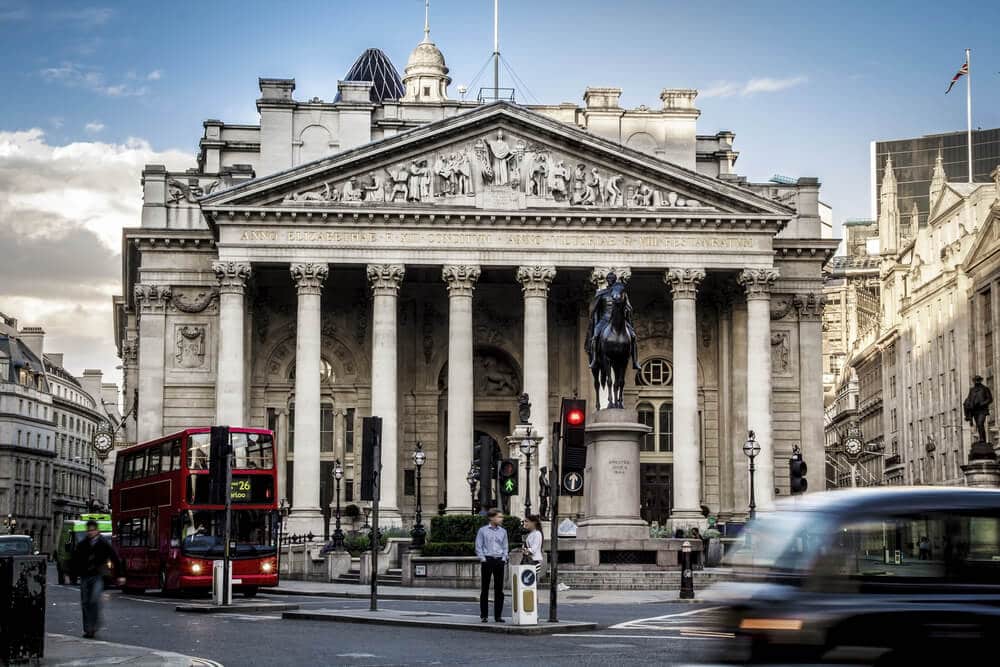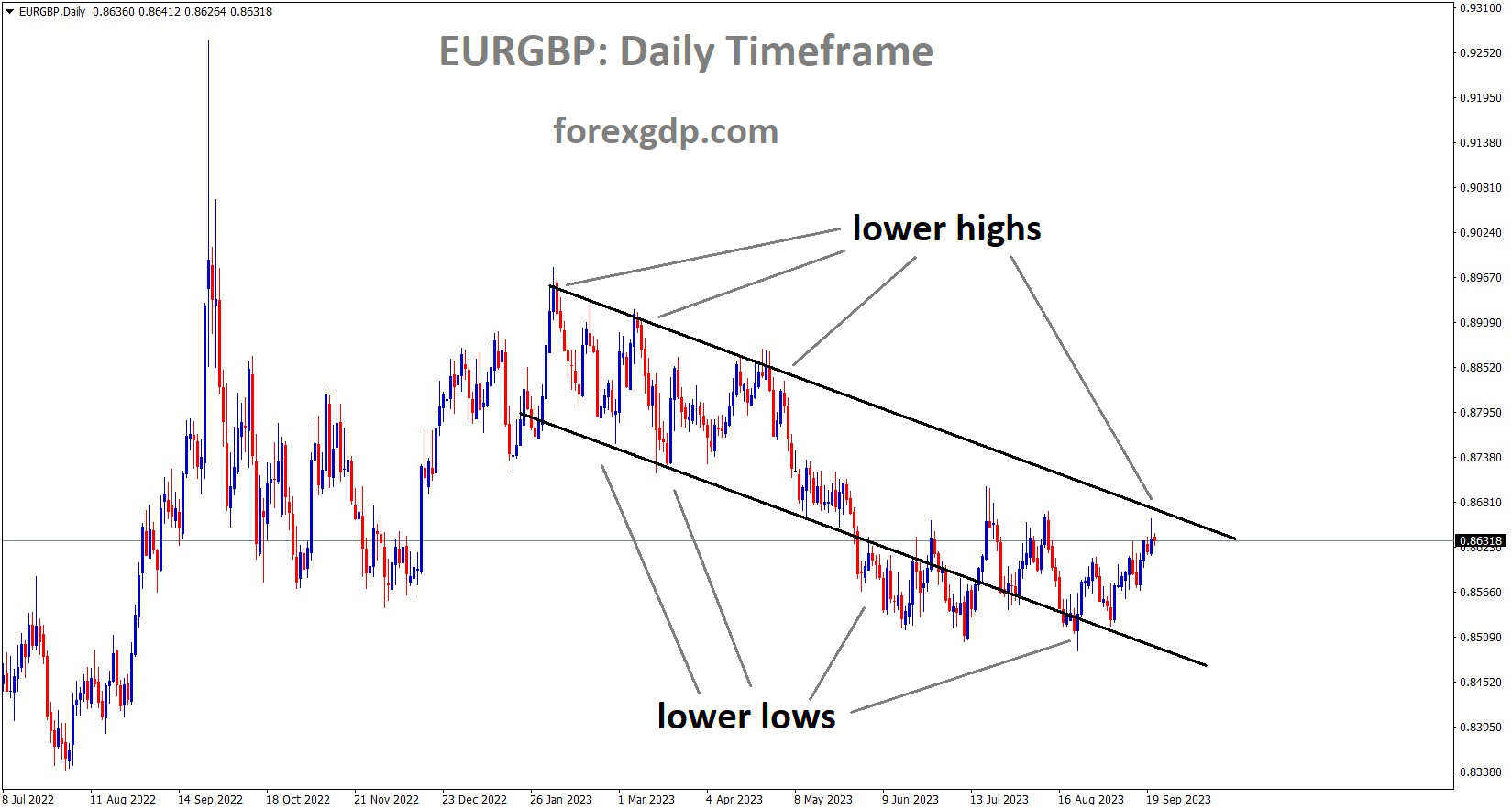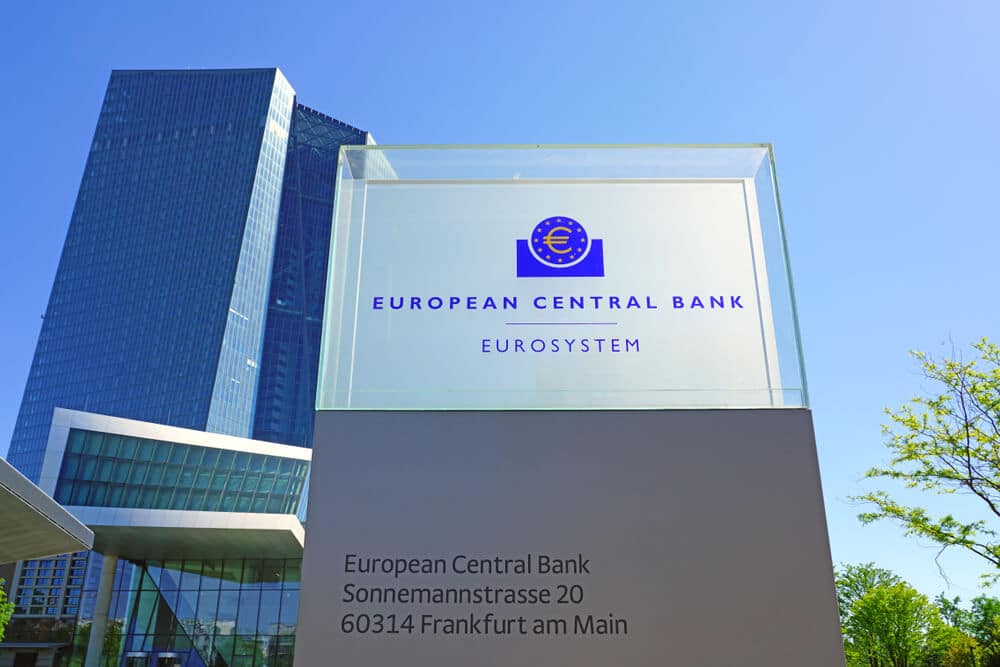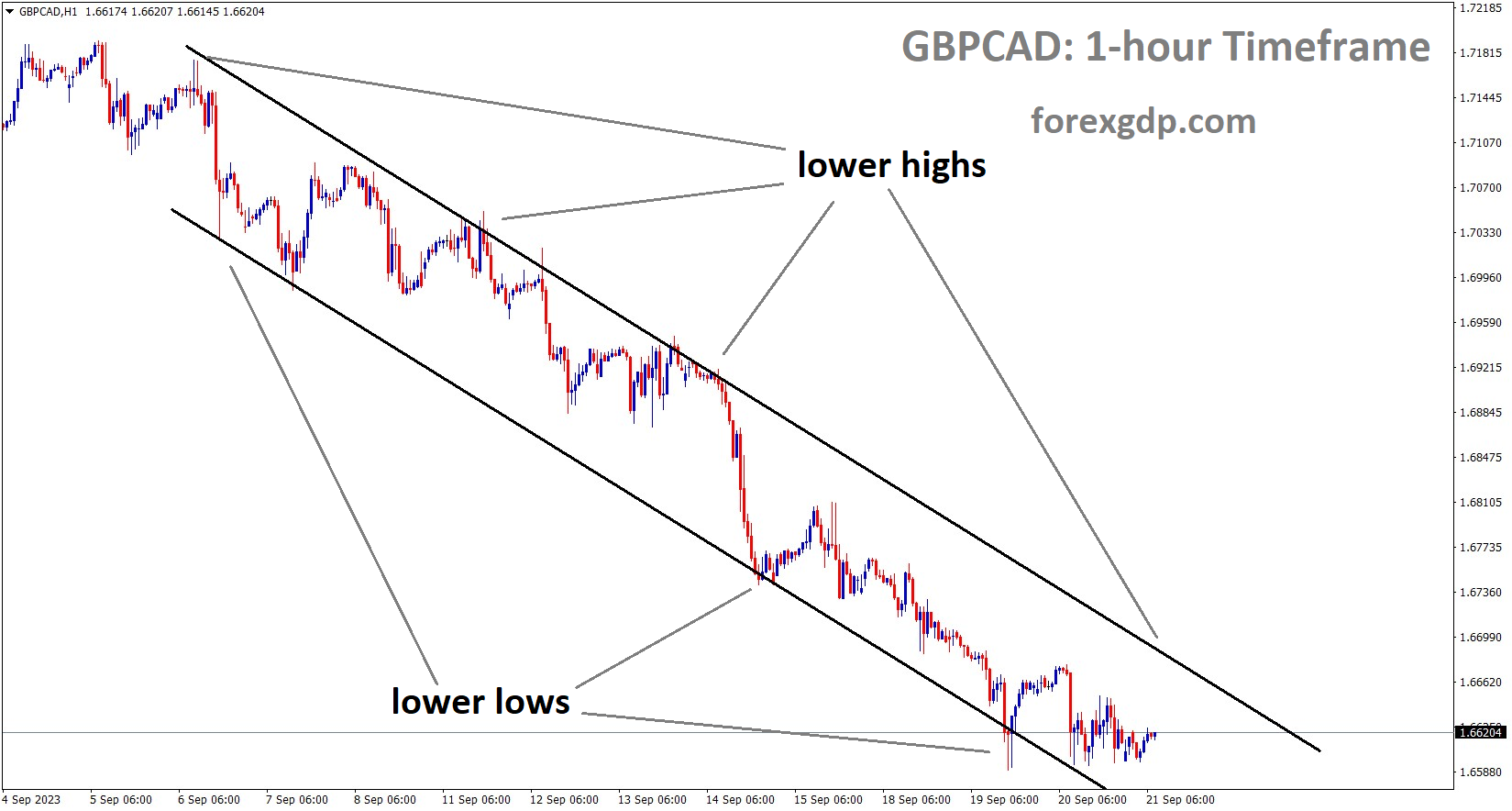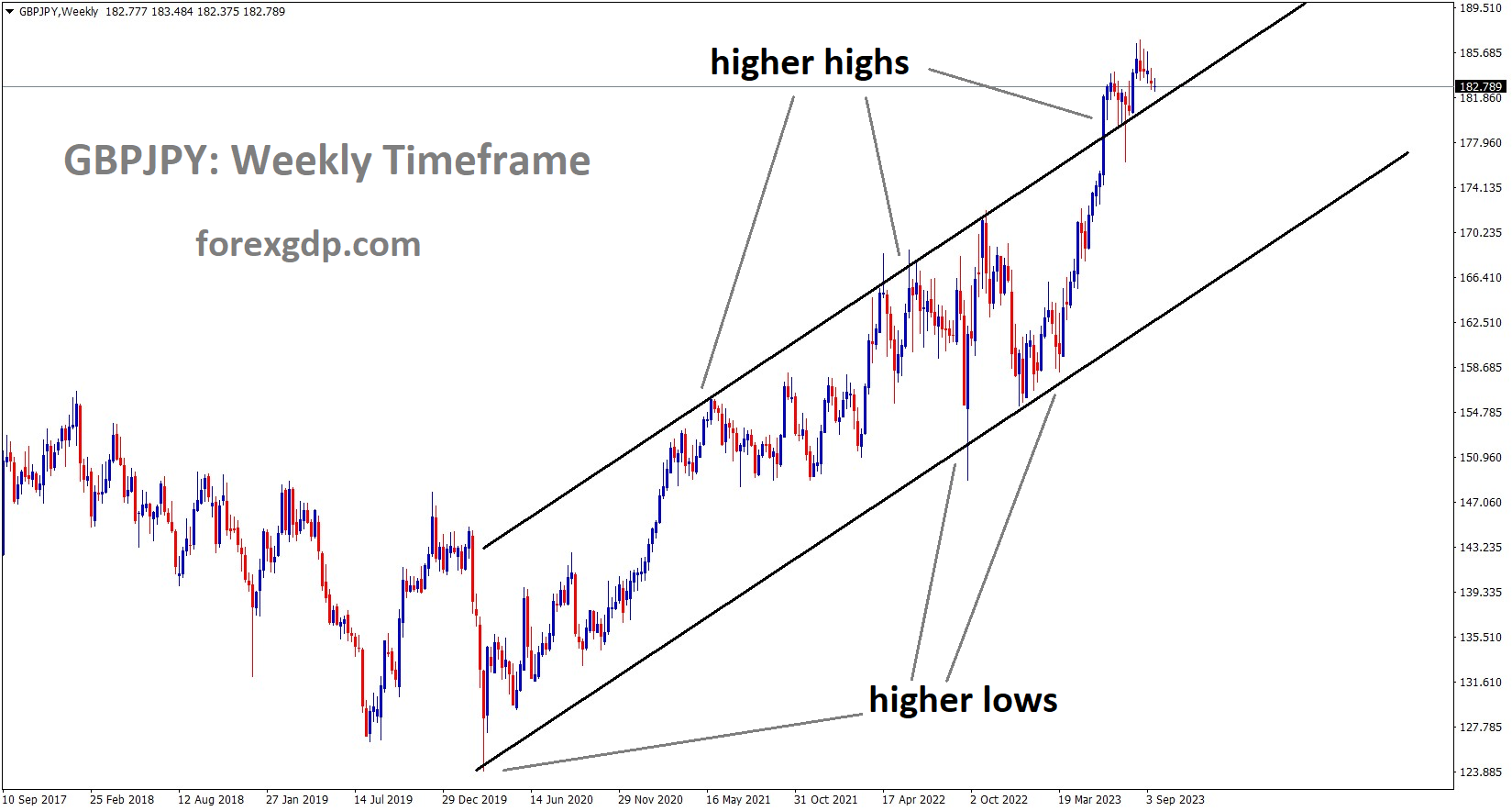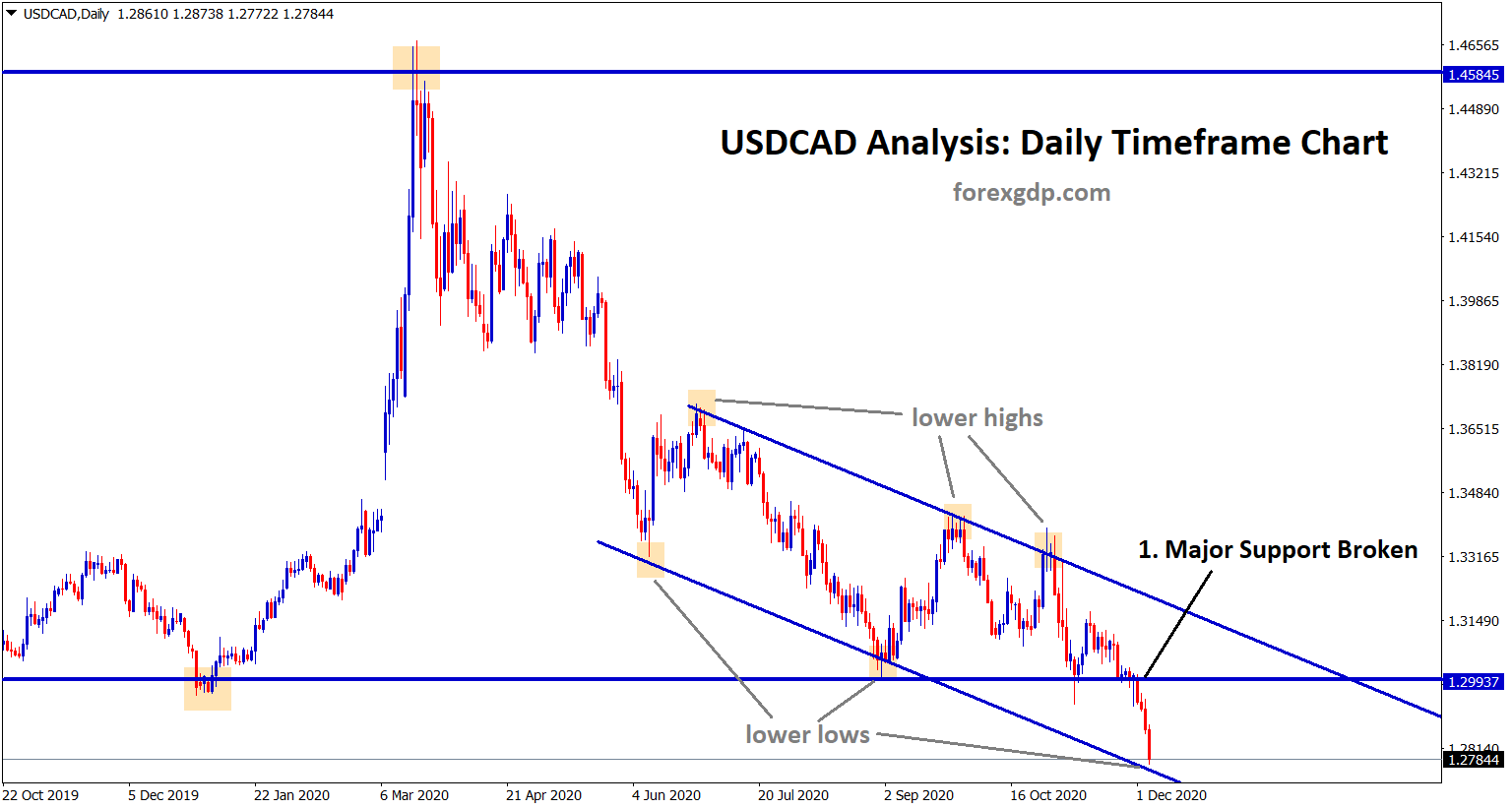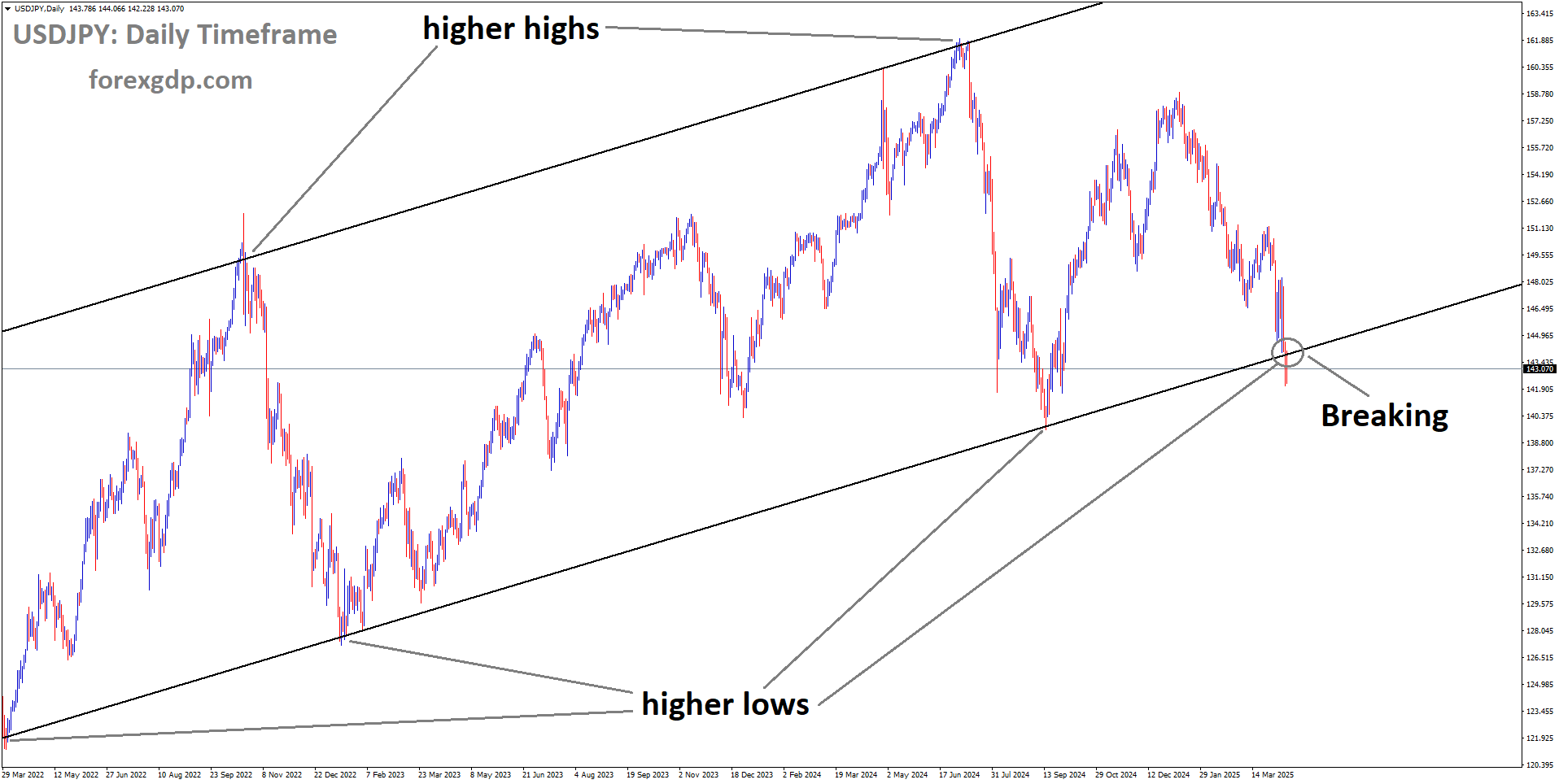GBPCHF is moving in the Box pattern and the market has reached the support area of the pattern.
This week, the Bank of England may raise rates to 5.50%, signaling a potential conclusion to the tightening cycle as the public grapples with elevated inflation and higher rates.
In recent times, the Bank of England (BoE) has found itself at the epicenter of discussions concerning its approach to interest rates. After an unprecedented 14 consecutive interest rate hikes, market observers, economists, and the general public are eagerly seeking insights into the central bank’s next move. This comprehensive analysis aims to dissect the underlying factors that have fueled this prolonged tightening cycle, gauge the sentiment of the public, and explore the potential scenarios that the BoE may face in the upcoming monetary policy decisions.
The Hike History
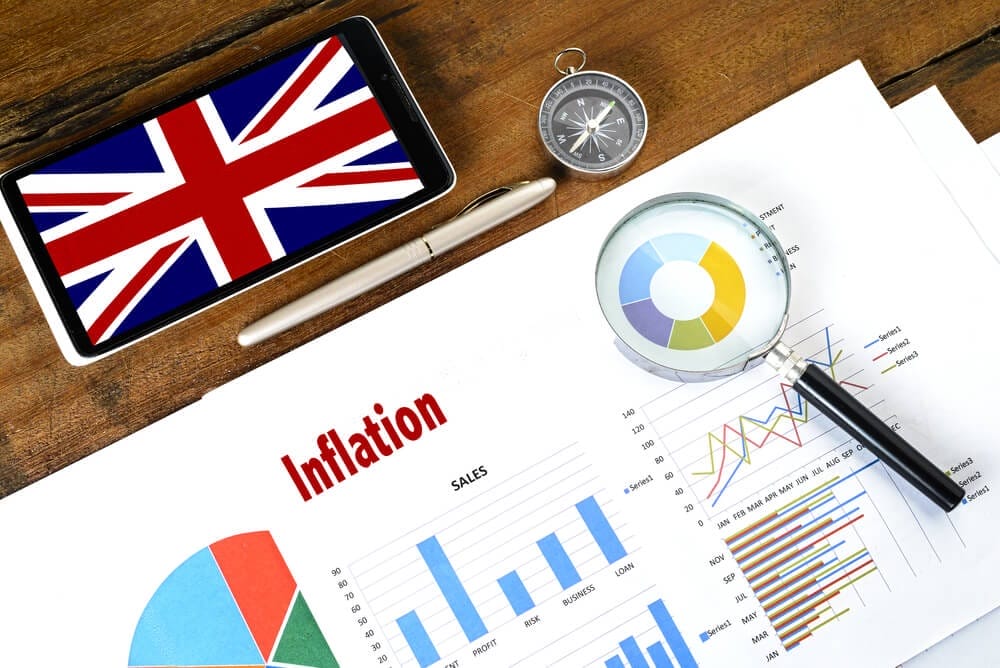
A Prolonged Hiking Cycle
The BoE’s journey of interest rate hikes began in December 2021, marking a pivotal shift in monetary policy. Over the course of 21 months, the central bank has diligently worked to elevate interest rates from a historic low of 0.1% to the current level of 5.25%. This unprecedented series of rate hikes has attracted considerable attention and scrutiny both domestically and internationally.
Inflation Control
The primary driver behind the relentless interest rate increases has been the urgent need to curb rising inflation.
GBPUSD is moving in the Descending channel and the market has reached the lower low area of the channel
Sarah Breeden, a prospective member of the Monetary Policy Committee (MPC), publicly acknowledged that without the BoE’s proactive intervention, inflation could have soared to levels far beyond what has been experienced.
The Current Situation
Inflation Still High
Despite the persistent tightening cycle, inflation remains stubbornly high, casting doubts on the effectiveness of the BoE’s monetary measures. The central bank’s primary goal has been to keep inflation close to its target of 2%. However, inflationary pressures, driven by factors such as supply chain disruptions and rising energy costs, have proven more resilient than initially anticipated.
Public Confidence Declines
One of the critical aspects to consider is public sentiment regarding the BoE’s performance in controlling inflation. In a survey conducted by the Bank in early August, the results painted a bleak picture. Respondents were asked whether the BoE was effectively “doing its job to set interest rates to control inflation.” The outcome was far from encouraging, with the net satisfaction rating plummeting from -13 in May to a worrisome -21. This significant decline in public confidence reflects growing concerns about the central bank’s ability to tackle inflation effectively.
Long-term Inflation Expectations
The survey also delved into the public’s perception of long-term inflation expectations. Respondents were asked about their predictions for inflation five years down the line. Surprisingly, the median answer provided by participants was 2.9%, nearly 1% higher than the BoE’s official 2% target. This discrepancy underscores a notable lack of confidence among the public in the BoE’s capacity to maintain control over inflation in the long run.
Market Expectations
Upcoming Rate Decision
With the BoE poised to make its next interest rate decision, market expectations are running high.
EURGBP is moving in the Descending channel and the market has reached the lower high area of the channel
The prevailing sentiment suggests that the central bank is likely to announce yet another rate hike, pushing the base rate to 5.5%. This anticipated move would mark a fresh 15-year high for interest rates in the United Kingdom.
Speculation of a Pause
However, market analysts and observers are not unanimous in their expectations. Some believe that the BoE might contemplate a temporary pause in the rate hikes, with the possibility of resuming them at a later meeting. Recent comments from the BoE have hinted at the potential conclusion of the tightening cycle, introducing an element of uncertainty into the equation.
Comparison to Other Central Banks
To gain a more comprehensive perspective, it is essential to compare the BoE’s actions with those of other major central banks. The European Central Bank (ECB) has already initiated rate hikes and signaled its intention to maintain rates at the new level for the foreseeable future. Similarly, the Federal Reserve in the United States appears to be either approaching or reaching the peak of its interest rate trajectory. These developments on the global stage have a significant impact on the BoE’s considerations.
The Decision Dilemma
Differing Views within the Committee
The BoE’s Monetary Policy Committee is composed of members with varying viewpoints on the future path of interest rates. This diversity of perspectives has added complexity to the decision-making process. In recent meetings, the committee members have demonstrated contrasting stances. While some members advocate for maintaining the status quo and avoiding further rate hikes, others have consistently pushed for more aggressive increases, such as a 50-basis-point hike.
Influence of Inflation Report
One crucial factor that may influence the BoE’s decision-making process is the availability of the latest Consumer Prices Index (CPI) figures.
GBPCAD is moving in the Descending channel and the market has reached the lower low area of the channel
The August CPI report, scheduled for release, is expected to provide critical insights. Forecasts anticipate a slight decrease in core inflation by 0.1%, bringing it to 6.8%. In contrast, headline inflation is projected to rise by 0.2%, reaching 7.0%. These figures will serve as vital indicators for the BoE as it gauges the current state of inflation.
Market Dynamics
Currency Impact
The currency market is a key arena where the BoE’s actions reverberate. The British pound (GBP) has come under significant pressure, particularly against the backdrop of a strengthening US dollar. This phenomenon has been influenced by several factors, including a weakened Euro and stronger-than-expected economic data emerging from the United States.
US Dollar Index
The US dollar index, which measures the performance of the US dollar against a basket of major currencies, has climbed to levels not witnessed since March. Technical indicators also point to a bullish trend for the US dollar. This strength in the greenback has implications for the BoE’s decision-making process, as it may provide the Federal Reserve with additional room to maneuver in terms of rate hikes.
Global Economic Implications
The decisions made by the BoE regarding interest rates extend beyond the borders of the United Kingdom. They hold the potential to influence global economic dynamics, affecting trade, investment, and overall economic stability. As one of the world’s major central banks, the BoE plays a pivotal role in shaping international financial markets.
Conclusion
The Bank of England finds itself at a critical juncture in its monetary policy decisions. With high inflation, diminishing public confidence, and a committee characterized by varying viewpoints, the central bank’s choices will have far-reaching implications, not only for the UK economy but also for global financial markets.
GBPJPY is moving in an Ascending channel and the market has reached the higher high area of the channel
As the eagerly anticipated interest rate decision approaches, investors, businesses, and the public are on high alert, eagerly awaiting clues about the central bank’s future course of action.
Whether the Bank of England chooses to pause the rate hikes temporarily, continue the tightening cycle, or maintain the status quo, its decisions will exert a profound influence on the economic landscape in the months to come. The forthcoming interest rate decision, along with subsequent announcements and guidance, will be meticulously scrutinized by all stakeholders as they seek to gain insights into the central bank’s strategy and its potential impact on the broader financial landscape. In an era of uncertainty, the Bank of England’s actions serve as a compass guiding the economic journey of the United Kingdom and, to some extent, the world.
Don’t trade all the time, trade forex only at the confirmed trade setups.
Get more confirmed trade setups here: forexgdp.com/buy/

